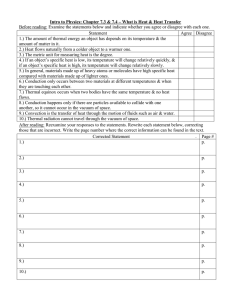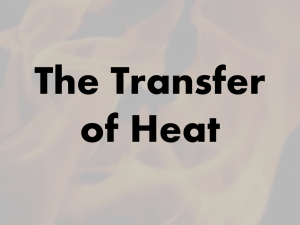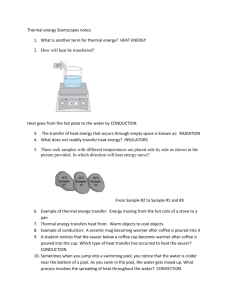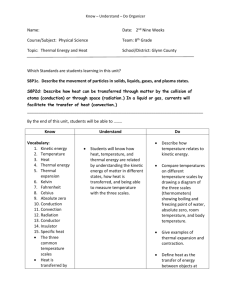Thermal Energy
advertisement
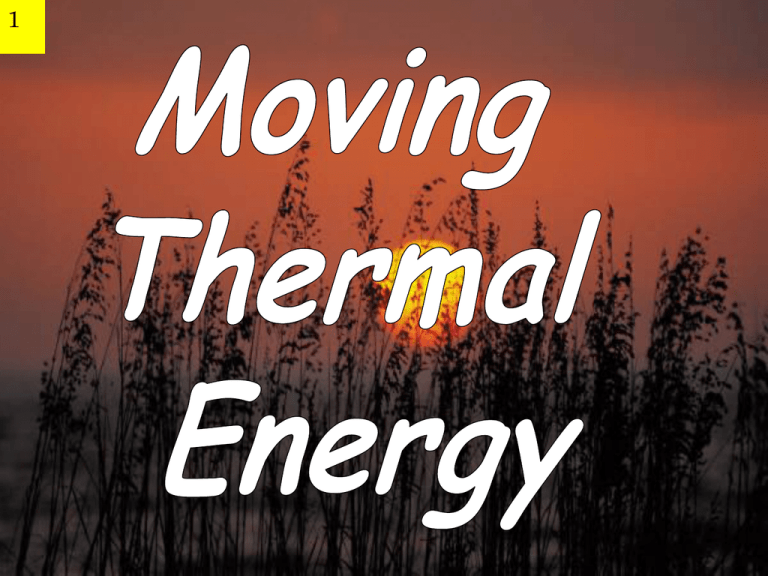
1 2 GOALS Explain molecular motion as it relates to thermal energy changes in terms of conduction, convection, and radiation. Intro Clip Differentiate between conduction, convection, and radiation. 3 Temperature and Heat • Temperature is the measurement of the avg. KE of the molecules in a material. • Heat is the transfer of KE from one material to another. Clip 4 5 THERMAL ENERGY TRANSFER CONDUCTION CONVECTION RADIATION 6 Conduction •The transfer of thermal energy in solids. •Materials must be in direct contact with each other! • Ex: Heating of the bottom of a pot on stove. 7 Convection •clip • Transfer of thermal energy in liquids and gases. • The matter actually moves from one place to another. 8 Radiation •Transfer of thermal energy by electromagnetic waves (we’ll discuses these more later) • Transferring energy through space...NO MATTER IS REQUIRED! 9 Clip 10 Specific Heat • Adding Energy to a material Causes the • Temperature to go up. • Taking energy away from a substance causes the temp. to • Go down! • Have you ever noticed that on a hot summer day the pool is cooler than the hot cement? • OR maybe that the ocean is cooler than the hot sand? • Why? The sun has been beating down on both of them for the same amount of time........... • It takes more thermal energy to raise the temperature of water that it does the cement! 11 Water absorbs a lot of heat energy before its temperature changes while sand needs little heat energy before its temperature increases. 12 15 Specific Heat • The amount of energy required to raise the temperature of a material (substance). • It takes different amts of energy to make the same temp change in different substances. • We call the amt required: Specific Heat! 16 Specific Heat of water • The Cp is high because H2O mols. form strong bonds w/each other. • It takes a lot of energy to break the bonds so that the the molecules can then start to move around faster (HEAT UP). 17 Example: Specific Heat of Water • Cp = 4,184 Joules of energy to raise the temperature of 1kg 1°C. Why Cp? • video clip Cp Stands for “Heat Capacity” 18 Calculating Specific Heat The Greek letter Δ means “change in” 19 EXAMPLE : p162 • • • • • • • • Mass = 45kg Q = 203,000J Δt = 40°-28° Δt = 12° Cp = ? Q =m x Cp x Δt Q/(m x Δt) = Cp Cp = 376 J/(kg °C) 20 21 Calorimeter 22 23 Conduction can BEST be described as the transfer of energy A B C D by by by by traveling through space as waves the movement of fluids the expansion of gases contact between particles A copper ornament has a mass of 0.0693 kg and changes from a temperature of 20.0°C to 27.4ºC. How much heat energy did it gain? A 200 J B 460 J C 540 J D 740 J 24





